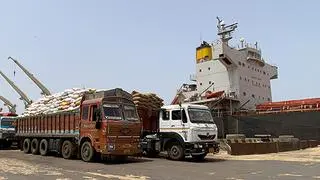The prices of fruit and vegetables directly affect two important entities in the economy: the farmer and the consumer. The focus is on ‘right price’ instead of ‘right value’. It is imperative to get good quality fruit and vegetables (F&V) at the right value rather than poor quality at the cheapest price.
Empirically, it is evident that modern trade sells essential F&V at lower than market rates and uses this as a footfall driver.
Modern trade aggregates demand and pushes bulk purchases to the farm level. Unfortunately, the offtake volumes of modern retailers is too small (2 per cent of the city) to make a significant impact. It must also be said that modern trade has not paid enough attention to this, and not invested enough to unlock the supply chain costs.
In any case, what is a reasonable price for onions: ₹5 or ₹40? And from whose point of view: the consumer’s or the farmer’s?
Inherent contradictionsThere is a big price difference between farm gate price and cost to the customer. The common understanding is that the middleman makes a lot of money or that hoarding is the culprit. This may be so. However, the middleman plays an important role as the marketing and selling agent for the farmer. Of course, the transaction may not be transparent.
The single biggest culprit is in-transit wastage, which could be as high as 25 per cent to 40 per cent. This matter merits serious attention.
The only way to prevent wastage is to have single ownership from the point of harvest to the point of reaching the consumer. Only the retailer can fulfil this role.
The majority of the red onion consumed in India is supplied from Maharashtra. Why don’t we run an ‘onion train’, a rake dedicated carrying onions from Nashik to other cities? It will prevent damage, reduce transit time and lower transportation cost.
Restricting movement of produce across geographies must be avoided. Farmers must be given the freedom to choose their market. Marketing issues
Children of farmers are no longer interested in farming. There are other opportunities and cash-for-work schemes that are more profitable. Besides, migrant labour has tended to remain in their hometowns because of better opportunities there. As a result, the labour force is dwindling. With production mired in problems, marketing should be more rewarding.
Hardworking farmers and millions of willing consumers are connected by the mandi . Although every city is served well by the mandi , the latter are ill-equipped with infrastructure to handle bulk perishables, delicate F&V, cold storage and ripening chambers.
While the laws are being changed, upgrading the quality of the terminal markets is important. Mandis should facilitate aggregation, not restrict movement. Further, there are few alternate channels of sale, apart from the mandi . Modern trade has been slow in filling this need.
Only when bulk buying happens at the farm level will good supply chain practices set in and prices reduce. The problem has to be attacked both at the supply and demand ends. We must encourage fresh food retail outlet chains that are close to consumers’ homes.
Many existing kiranas can become specialised sellers of F&V by being connected to central supply points and trained to handle F&V. Better handling infrastructure needs to be developed at mandis . F&V should be allowed unrestricted flow across the country. And certainly, with the help of rainwater harvesting, the season of availability can be extended.
The writer is a former CEO of Reliance Retail and the Future Group








Comments
Comments have to be in English, and in full sentences. They cannot be abusive or personal. Please abide by our community guidelines for posting your comments.
We have migrated to a new commenting platform. If you are already a registered user of TheHindu Businessline and logged in, you may continue to engage with our articles. If you do not have an account please register and login to post comments. Users can access their older comments by logging into their accounts on Vuukle.